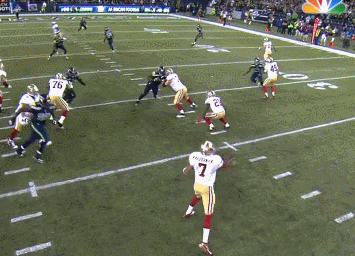patrick.net
An Antidote to Corporate Media
1,262,586 comments by 15,079 users - AmericanKulak, HANrongli, Patrick, Peter P, RWSGFY online now

The bill for house-equity lines is coming due
2014 Mar 26, 2:40am 13,383 views 63 comments
« First « Previous Comments 57 - 63 of 63 Search these comments
http://www.internationalman.com/articles/timing-the-collapse-ron-paul-says-watch-the-petrodollar#
Timing the Collapse: Ron Paul Says Watch the Petrodollar
By Nick Giambruno
"The chaos that one day will ensue from our 35-year experiment with worldwide fiat money will require a return to money of real value. We will know that day is approaching when oil-producing countries demand gold, or its equivalent, for their oil rather than dollars or euros. The sooner the better." (emphasis mine)
~ Ron Paul

What Ron Paul is referring to here is the petrodollar system. It's one of the main pillars that's been holding up the US dollar's status as the world's premier reserve currency since the breakdown of Bretton Woods.
Paul is essentially saying that, if we want to better understand the answer to the elusive question of "When will the fiat US dollar collapse?", we have to watch the petrodollar system and the factors affecting it.
At the recent Casey Research Summit, I had the chance to speak extensively with Dr. Paul on this subject, and he told me that he stands by his assessment.
I believe this is critically important, because once the dollar loses this coveted status, the window of opportunity to take preventative action will definitively shut for Americans.
At that moment, I believe the US government will become sufficiently desperate and implement the destructive measures that governments throughout the world and throughout history have all taken (overt capital controls, wealth confiscations, people controls, price and wage controls, pension nationalizations, etc.)
But it's not just the financial implications that need to be considered. The destruction of the dollar is going to wipe out the wealth of a lot people, and that will cause political and social consequences that will likely be worse than the financial consequences.
The three points to understand here are:
1. You absolutely must be internationalized before the US dollar loses its status as the premier reserve currency. Internationalization is your ultimate insurance policy.
2. The US dollar's status as the premier reserve currency is tied to the petrodollar system.
3. The sustainability of the petrodollar system is linked to Middle East geopolitics. Having lived and worked in the Middle East for a number of years, this is a topic I know a thing or two about.
From Bretton Woods to the Petrodollar
The dollar's role as the world's premier reserve currency was established in 1944 by the Allied powers in what was known as the Bretton Woods international monetary system.
Being victorious in WWII and possessing the overwhelmingly largest gold reserves in the world (around 20,000 tonnes) allowed the US to reconstruct the global monetary system with the dollar at its center.
Simply put, the Bretton Woods system was an arrangement whereby a country's currency was tied to the US dollar through a fixed exchange rate, and the US dollar itself was tied to gold at a fixed exchange rate.
Countries accumulated dollars in their reserves to engage in international trade or to exchange them with the US government at the official rate for gold ($35 an ounce).
By the late 1960s, exuberant spending from welfare and warfare, combined with the Federal Reserve monetizing the deficits, drastically increased the number of dollars in circulation in relation to the gold backing it.
Naturally, this caused countries to accelerate their exchange of dollars for gold at the official price.
The result was a serious drain in the US gold supply (20,000 tonnes at the end of WWII to around 8,100 tonnes in 1971, a figure supposedly held constant to this day).
Nixon officially ended convertibility of the dollar for gold to halt the gold outflow, thus ending the Bretton Woods system, on August 15, 1971.
The US had defaulted on its promise to back the dollar with gold.
The central justification that the gold–backed dollar had provided as to why countries held the dollar in their reserves and used it as a medium of international trade was now gone.
With the dollar no longer convertible into gold, demand for dollars by foreign nations was sure to fall and with it, its purchasing power.
OPEC passed numerous resolutions after the end of Bretton Woods, stating the need to retain the real value of its earnings (including discussions about accepting gold for oil), which resulted in the cartel significantly increasing the nominal dollar price of oil in the wake of August 15, 1971.

If the dollar was to sustain its status as the world's reserve currency, a new arrangement would have to be constructed to give foreign countries a compelling reason to hold and use dollars.
Nixon and Kissinger would end up succeeding in retaining the dollar's premier status by bridging the gap between the failed Bretton Woods system and the emerging petrodollar system.
The Petrodollar System
Between the years of 1972 to 1974 the US government completed a series of agreements with Saudi Arabia to create the petrodollar system.
Saudi Arabia was chosen because of its vast petroleum reserves, its dominant influence in OPEC, and the (correct) perception that the Saudi royal family was corruptible.
In essence, the petrodollar system was an agreement that, in exchange for the US guaranteeing the survival of the House of Saud regime by providing a total commitment to its political and security support, Saudi Arabia would:
1. Use its dominant influence in OPEC to ensure that all oil transactions would be conducted only in US dollars.
2. Invest a large amount of its dollars from oil revenue in US Treasury securities and use the interest payments from those securities to pay US companies to modernize the infrastructure of Saudi Arabia.
3. Guarantee the price of oil within limits acceptable to the US and act to prevent another oil embargo by other OPEC members.
The need to use dollars to transact in oil, the world's most traded and most strategic commodity, provides a very compelling reason for foreign countries to keep dollars in their reserves.
For example, if Italy wants to buy oil from Kuwait, it would have to first purchase US dollars on the foreign exchange market to pay for the oil, thus creating an artificial market for US dollars that would not have otherwise naturally existed.
This demand is artificial, since the US dollar is just a middleman in a transaction that has nothing to do with a US product or service. It ultimately translates into increased purchasing power and a deeper, more liquid market for the US dollar and Treasuries.
Additionally, the US has the unique privilege of not having to use foreign currency but rather using its own currency, which it can print, to purchase its imports, including oil.
The benefits of the petrodollar system to the US dollar are indeed difficult to overstate.
What to Watch For
The geopolitical sands of the Middle East have been rapidly shifting.
The faltering strategic regional position of Saudi Arabia, the rise of Iran (which is notably not part of the petrodollar system), failed US interventions, and the emergence of the BRICS countries providing potential future alternative economic/security arrangements all affect the sustainability of the petrodollar system.
In particular, you should watch the relationship between the US and Saudi Arabia, which has been deteriorating.
The Saudis are furious at what they perceive to be the US not holding up its part of the petrodollar deal. They believe that as part of the US commitment to keep the region safe for the monarchy, the US should have attacked their regional rivals, Syria and Iran, by now.
This would suggest that they may feel that they are no longer obliged to uphold their part of the deal, namely selling their oil only in US dollars.
The Saudis have even gone so far as to suggest a "major shift" is underway in their relations with the US. To date, though, they have yet to match actions to their words, which suggests it may just be a temper tantrum or a bluff. In any case, it is truly unprecedented language and merits further watching.
A turning point may really be reached when you start hearing US officials expounding on the need to transform the monarchy in Saudi Arabia into a "democracy." But don't count on that happening as long as their oil is flowing only for US dollars.
Conclusion
It was evident long before Nixon closed the gold window and ended the Bretton Woods system on August 15, 1971, that a paradigm shift in the global monetary system was inevitable.
Likewise today, a paradigm shift in the global monetary system also seems inevitable. By considering Ron Paul's words, we will know when the dollar collapse is imminent.
"We will know that day is approaching when oil-producing countries demand gold, or its equivalent, for their oil rather than dollars or euros."
There is no question that you want to be internationalized before that day arrives, which seems to be getting closer and closer. It is very possible that one day soon, Americans will wake up to a new reality, just as they did on August 15, 1971.
Your goal should be to remove as much political risk from as many aspects of your life as possible so that you are not caught flat-footed when the next August 15, 1971 moment arrives.
This includes internationalizing your savings in general and owning physical gold offshore in particular, obtaining a second passport, and offshoring your IRA, among other things. You can find Casey Research's specific guidance on these critical measures and more here.

http://www.marketwatch.com/story/housing-pain-could-halt-stocks-gain-2014-04-07?dist=lbeforebell
Housing pain could halt stocks’ gain
Opinion: Weaker demand for real estate could spread to other asset classes
By Jeff Reeves
With talk about a 1987-like stock-market crash, geopolitical unrest in Ukraine and the risk of a debt crisis in China, investors are starting to get jittery.
The S&P 500’s SPX -1.08% outsized gain of 30%-plus last year certainly can’t be repeated. And if the first quarter is any indication, not many investors will make much money by owning the benchmark index.
For the record, I do not think a major correction is in order for equities. I expect the volatility we’ve seen this year — something that’s held back the S&P 500 to a gain of only 1.3% — is pretty much what’s in store for the rest of 2014. I predict we’ll finish with the S&P 500 around 1,950 on Dec. 31. (It’s now at about 1,897.)
Click to Play
U.S. employers stepped up their pace of hiring in March
But while I’m not too worried about stocks, I do think the housing market may take a hit. And the fallout of negative sentiment could affect other assets and consumer spending as a result.
A big narrative of our economic recovery has been a resurgent housing market. As a result, a slowdown or decline could be bad news for investors of all stripes.
Here’s what I think investors and homeowners should be watching in the real estate market, and the warning signs worth noting.
Interest rates
As it becomes increasingly clear that the Federal Reserve is on track to raise key interest rates in the next 12 to 18 months, the rate on mortgages has been creeping higher too.
Mortgage rates were elevated in March, and interest rates are flirting with a monthly average of 4.5% on a 30-year fixed – which, according to Freddie Mac mortgage survey data, would mark the highest levels since July 2011.
Consider that a $200,000 loan at a 3.5% rate works out to about $900 per month, while a 4.5% rate is just shy of $1,015 — a difference of $115 monthly for the same home. And for more expensive houses, the difference is even more dramatic.
This additional cost burden could price people into smaller homes or deter them from shopping altogether. And, remember, this recent rate increase has occurred even without a Fed-driven rate hike behind it, so mortgage interest rates could move significantly higher across the coming months.
And let’s not even get into what an increase in rates could do to those without fixed mortgages who will see payments adjust up as a result.
The bottom line is that higher borrowing costs will undoubtedly cool some of the demand for housing by the time we hit the key house-shopping months of spring and summer 2015.
Prices fueled by low supply
Sure, numbers released last week from data firm CoreLogic showed yet another uptick in prices nationwide. Specifically, February prices rose at the fastest year-over-year pace since 2006.
But that growth was propelled by a very tight housing supply much more than demand.
Through February, housing starts had fallen for three straight months, in part, due to the harsh winter weather. And while January’s numbers were revised up, the massive 11.2% dip still has had a big effect on inventory during the all-important spring buying season.
Additionally, there’s a chance that March could continue that trend, too, keeping supply limited for some time.
And while permits did surge in February, keep in mind the rise for single-family housing permits was just 1.8%. It was a multifamily-permit surge of 24.3% that many pundits latched on to as a hopeful sign, but the details don’t exactly point to delayed single-family starts picking up in earnest when the latest numbers hit.
Demand is cooling
It’s also worth noting that in that same report, CoreLogic’s chief economist predicted that “price increases should moderate over the next year as home equity releases pent-up supply.â€
In other words, there are a lot of people who have been sitting on their homes waiting for them to rebound in value and may look to get out while the getting is good.
Separately, the National Association of Realtors said existing-home sales declined 0.4% in February to the slowest pace since 2012.
Last but not least, remember that part of the demand that appeared in 2010 and 2011 was from prospective buyers who simply couldn’t afford overly inflated prices. But now that one in six housing markets are back to pre-recession levels, the simple nature of rising prices has once again priced some Americans out of a home.
Even if interest rates were to remain relatively stable for the next year, which I doubt, these downward pressures on demand are worth noting.
Location, location, location
Of course, these are broad trends and it’s impossible to make a one-size-fits-all analysis of the housing market. Based on your specific property and community, the picture may be a heck of a lot better … or a heck of a lot worse.
But it’s worth noting that by and large, prices have been supported by tight supply more than red-hot interest in home ownership again. That doesn’t leave a lot of margin for error as we face higher interest rates and home prices that have rebounded to peak levels in many places.
I’ll admit that much of the “shadow inventory†of foreclosed homes has been largely eaten up, with a 35% drop in foreclosure inventory over last year worth about $70 billion. That’s undeniably a good thing.
However, passing the foreclosure kidney stone does not mean the housing market is now risk-free or that price appreciation is guaranteed. Investors who forget that do so at their own peril.
So long as interest rates don’t spike and Americans don’t flood the market with houses for sale, things will stay pretty stable.
But investors who are simply blaming the weather and expecting housing to never tumble again should start taking a more skeptical look at the numbers.
Because if housing gets the sniffles, you can expect many other asset classes to come down with a cold.
It is now a question of when the massive inflationary tsunami will completely obliterate the capacity of the existing small property owners to pay their bills and transfer all wealth to the ruling plutocracy.They don’t want you to be productive anymore,because they don’t really care.They just print the money and buy you out through their proxy shell companies.
“I believe that banking institutions are more dangerous to our liberties than standing armies. If the American people ever allow private banks to control the issue of their currency, first by inflation, then by deflation, the banks and corporations that will grow up around [the banks] will deprive the people of all property until their children wake-up homeless on the continent their fathers conquered. The issuing power should be taken from the banks and restored to the people, to whom it properly belongs.â€Thomas Jefferson
Current US Inflation Rates: 2004-2014
http://www.usinflationcalculator.com/inflation/current-inflation-rates/
http://www.usinflationcalculator.com/inflation/current-inflation-rates/
The latest annual inflation rate for the United States is 1.1% through the 12 months ended February 2014, as published by the US government on March 18, 2014. The next inflation update is scheduled for release on April 15, 2014 at 8:30 a.m. ET. This upcoming data update will offer the inflation rate over the 12 months ended March 2014.
The chart, graph and table below displays annual US inflation rates from 2004-2014. Rates of inflation are calculated using the Current Consumer Price Index published monthly by the Bureau of Labor Statistics (BLS). For 2014, the most recent monthly data (12-month based) is used in the chart and graph.
Historical inflation rates are available from 1914-2014. If you would like to calculate rates between different dates, the US Inflation Calculator will do that quickly.
Inflation Rates Graph (2004-2014)
Annual Inflation Rates Chart (2004-2014)
http://www.usinflationcalculator.com/inflation/current-inflation-rates/
So long as interest rates don’t spike and Americans don’t flood the market with houses for sale, things will stay pretty stable.
Aaaah! Something I can hold my breath on....
So long as interest rates don’t spike and Americans don’t flood the market with houses for sale, things will stay pretty stable.
Aaaah! Something I can hold my breath on....
LOL... don't pass-out!
« First « Previous Comments 57 - 63 of 63 Search these comments















?uuid=0b439b58-b456-11e3-9a49-00212803fad6ming-due-2014-03-26

http://www.marketwatch.com/story/the-bill-for-home-equity-lines-is-coming-due-2014-03-26
For borrowers who tapped into their home equity in the heady days before the crisis, odds are good that their bill is about to jump by several hundred dollars a month. Regulators are worried that this will throw the neediest borrowers into default. And banks are concerned about what this means for their bottom line.